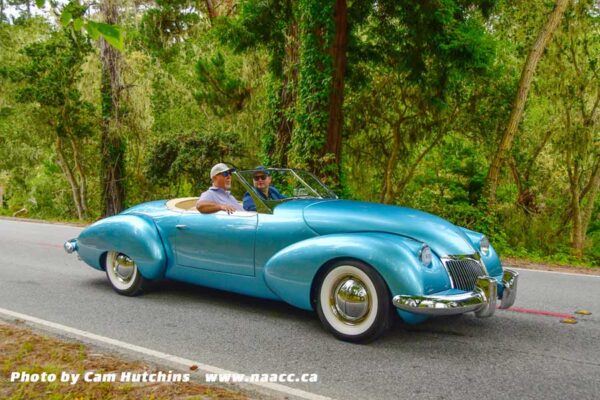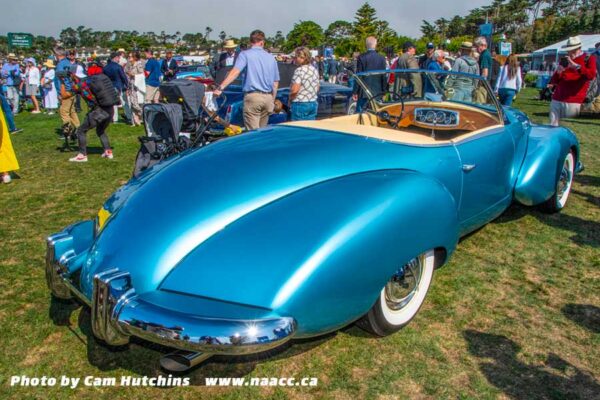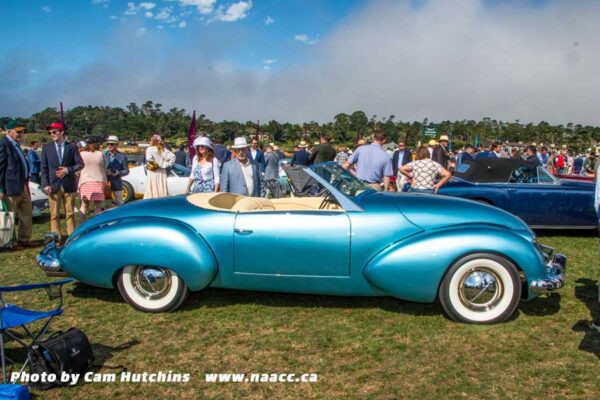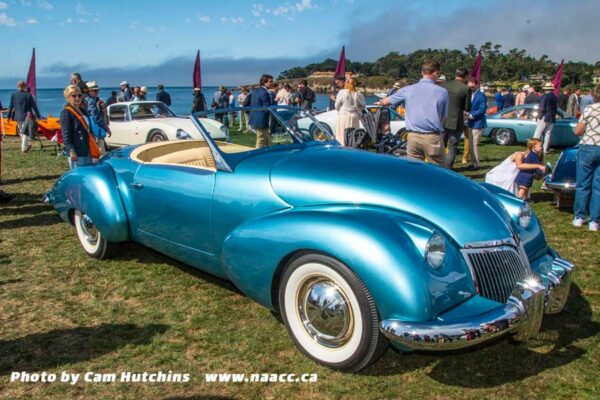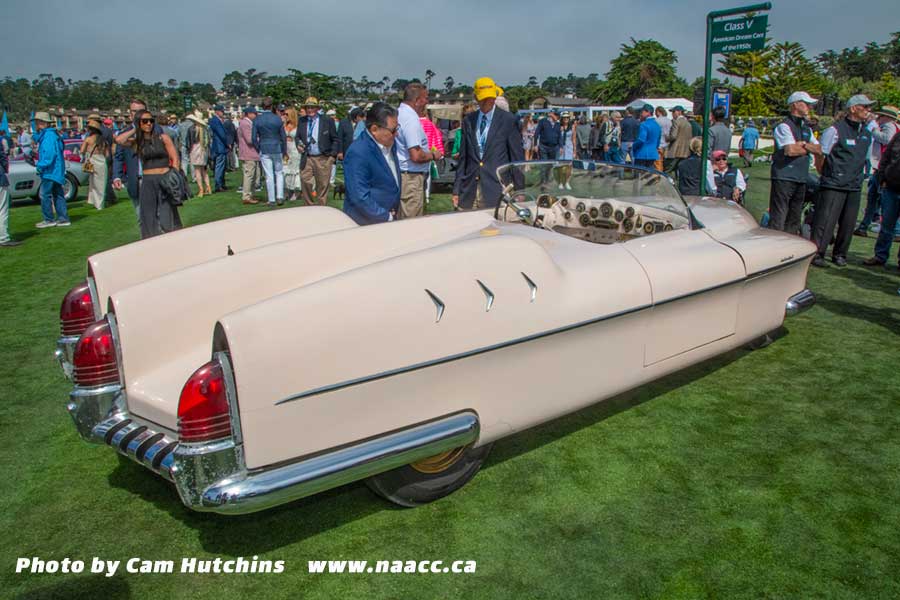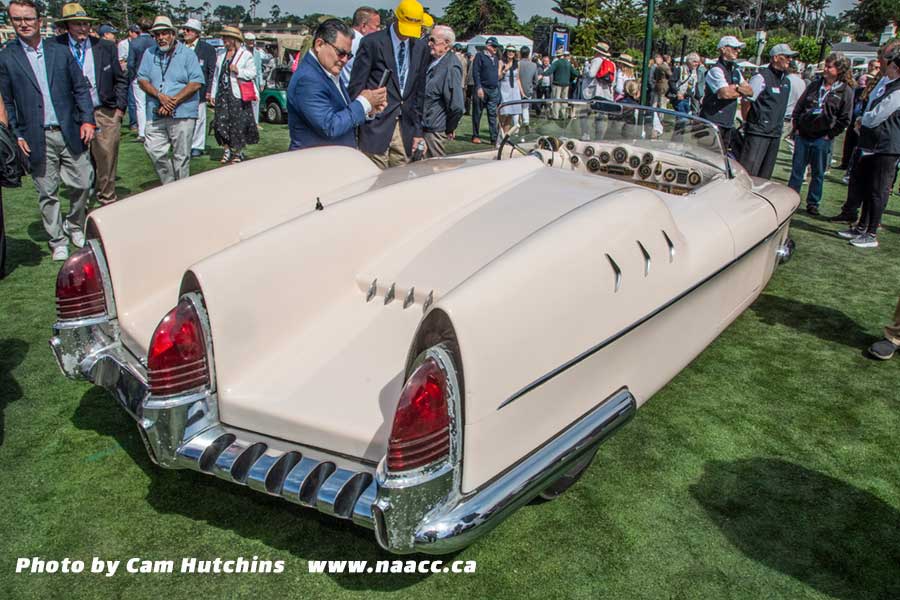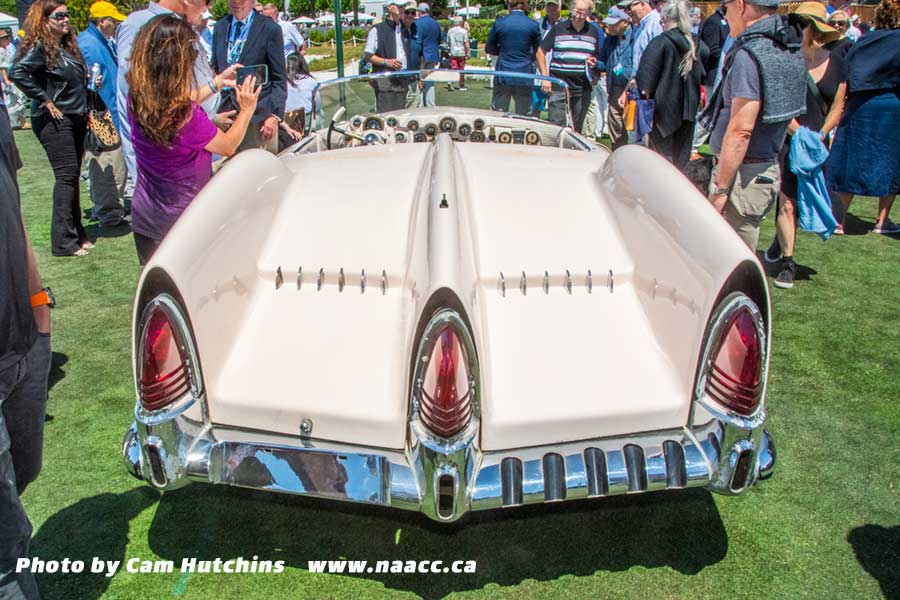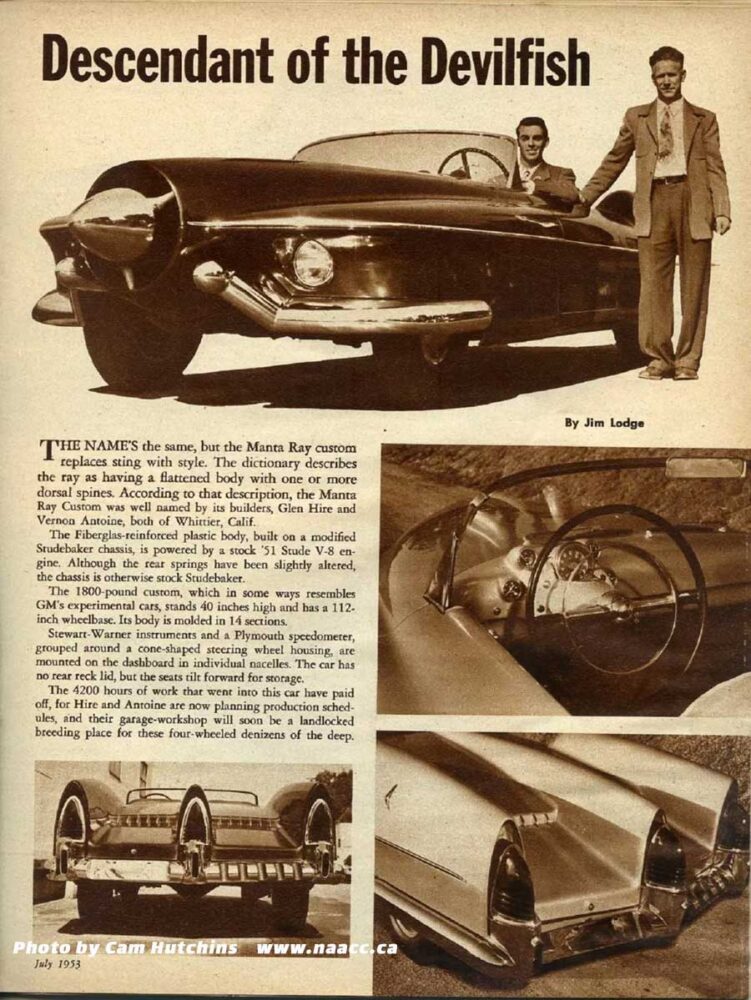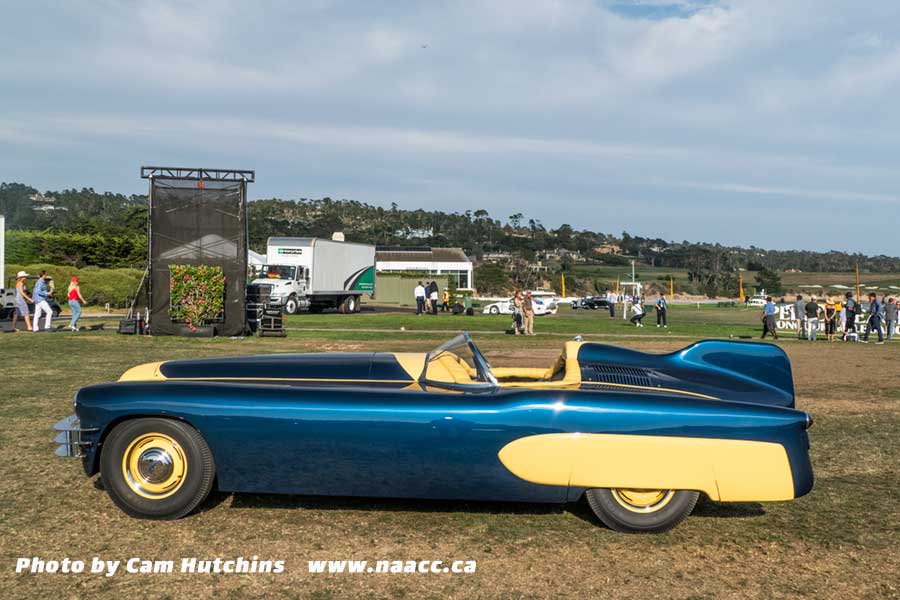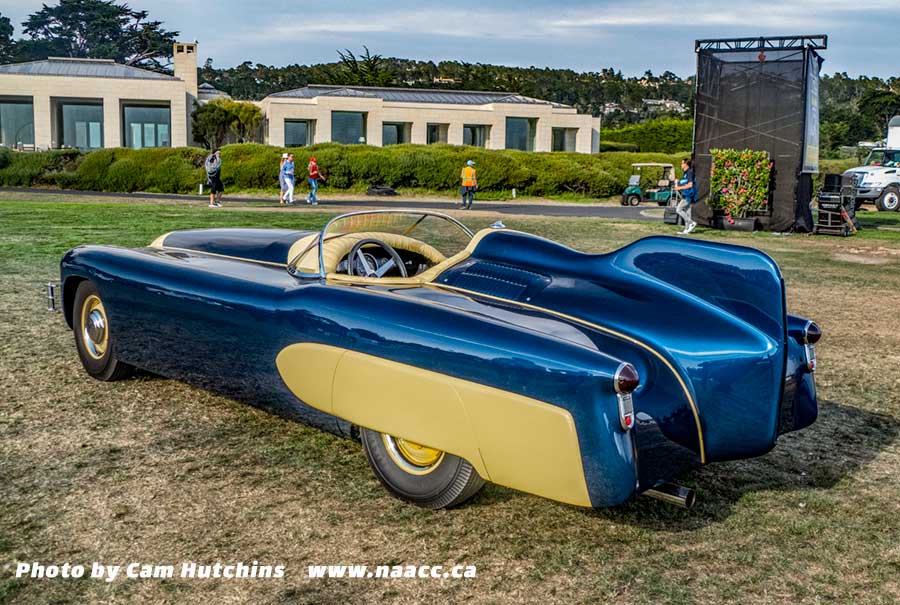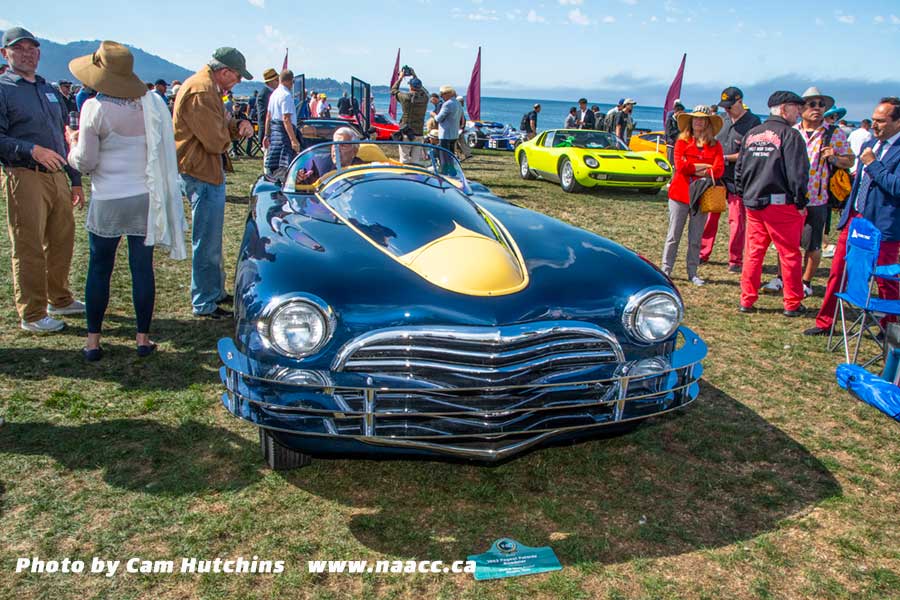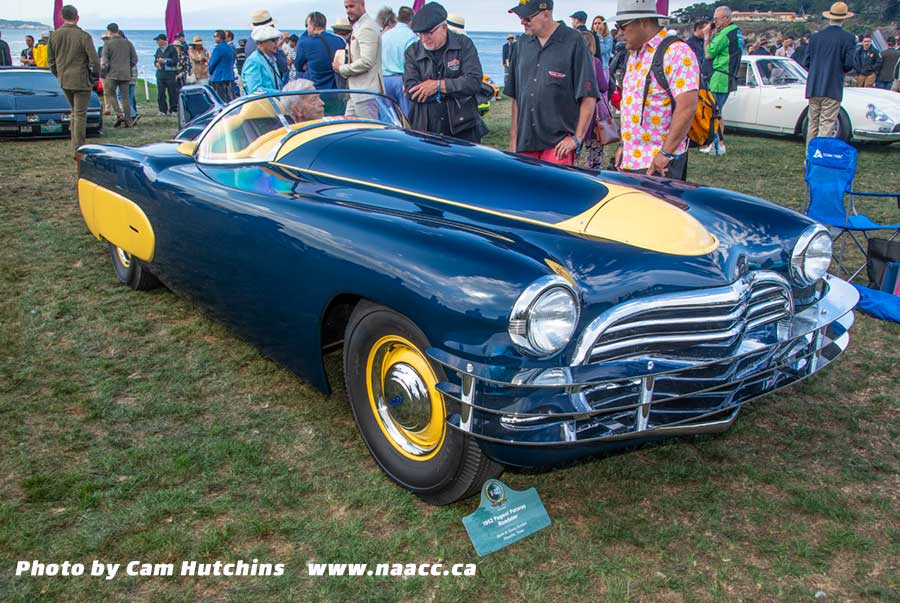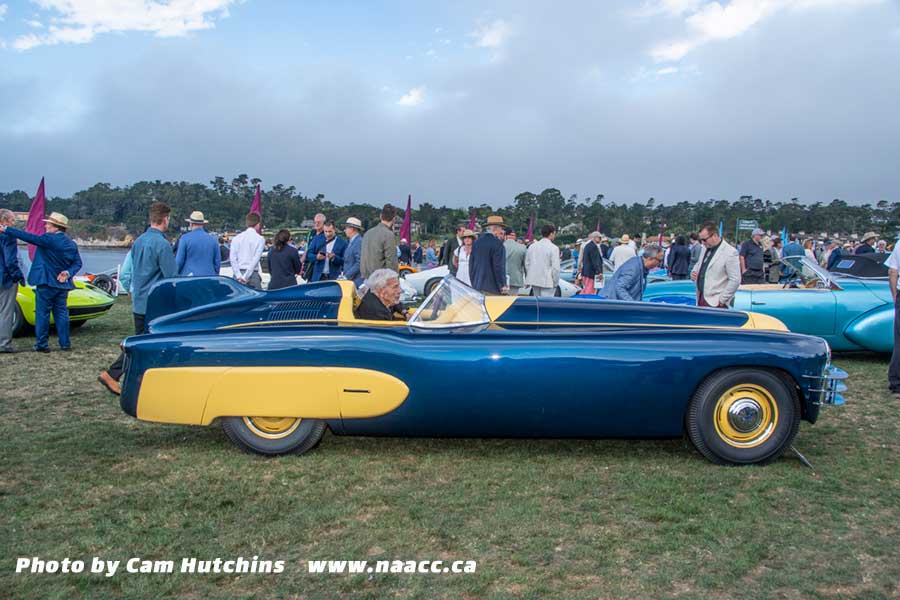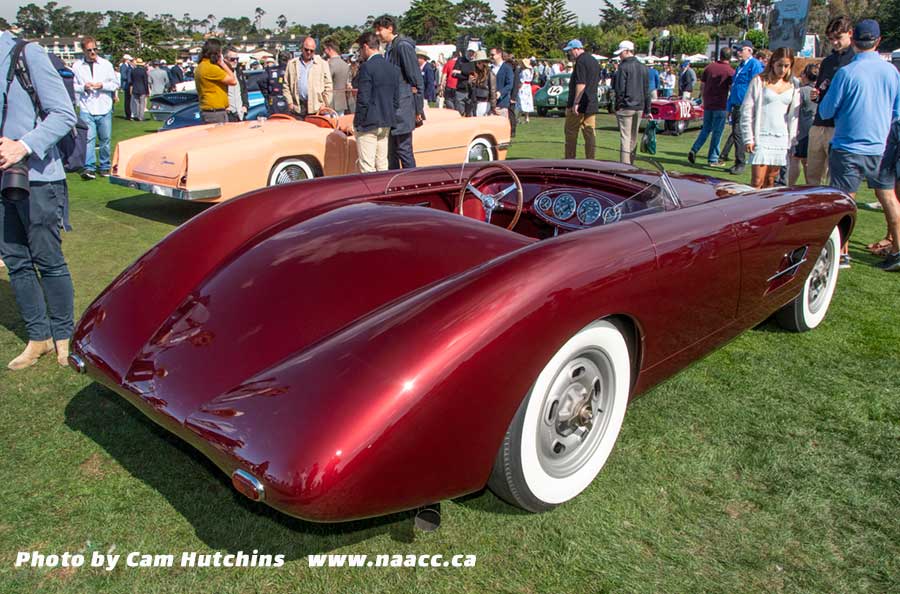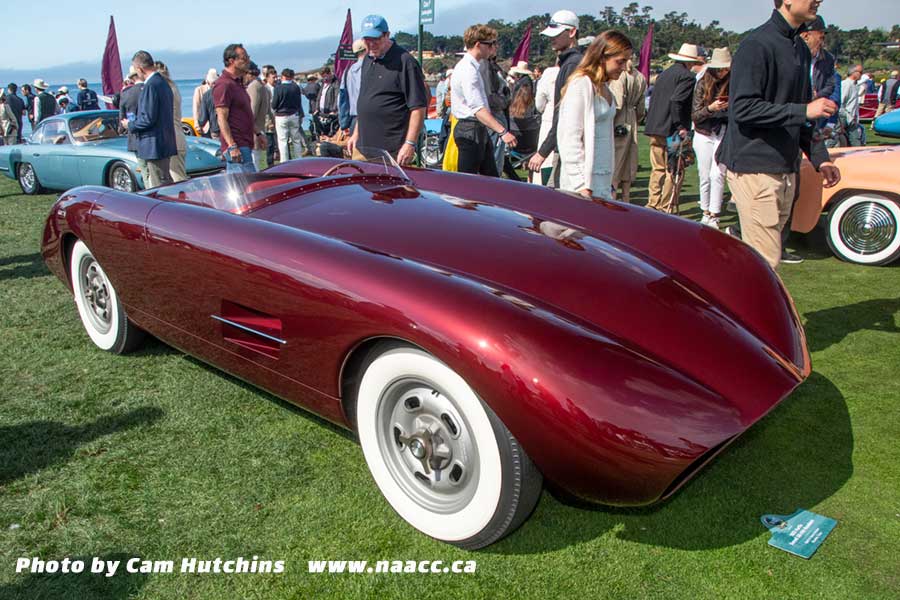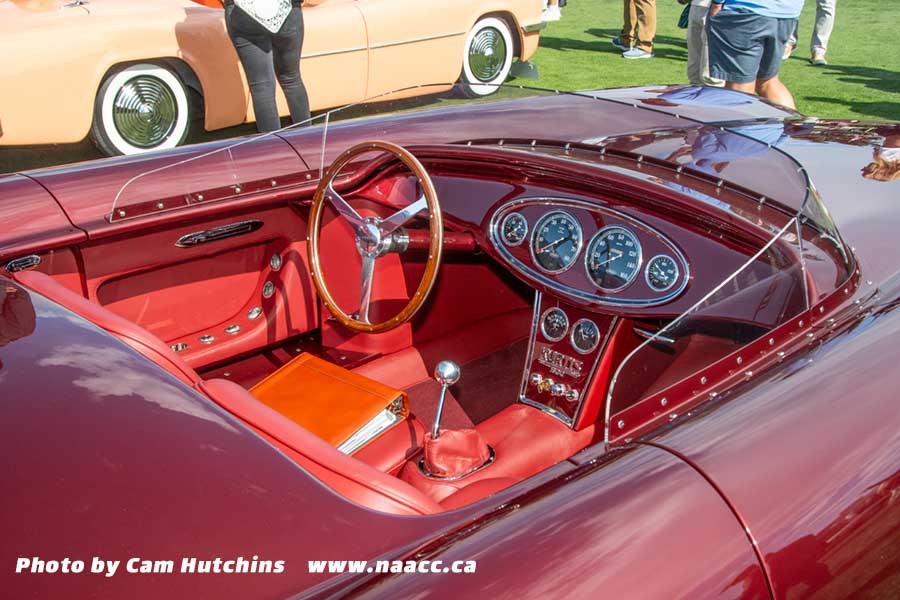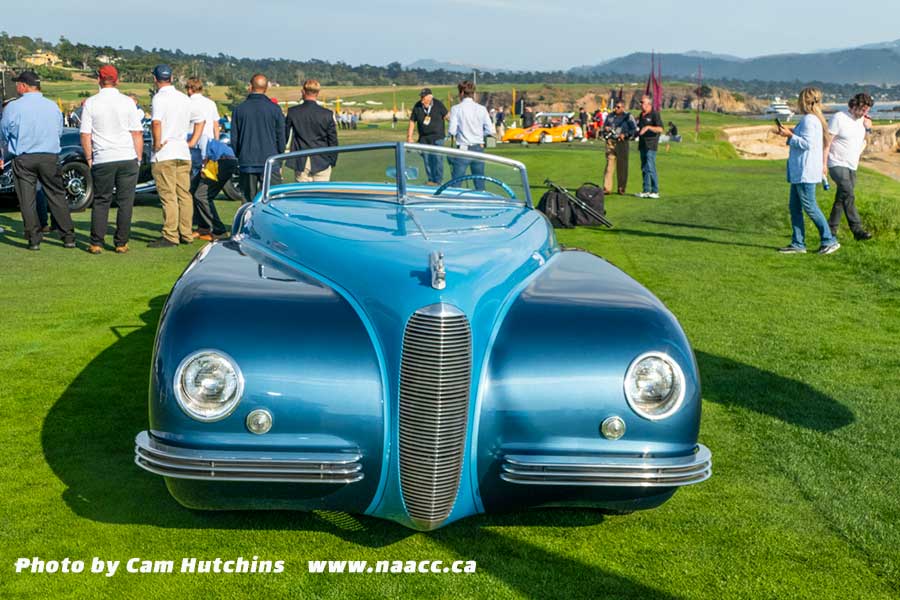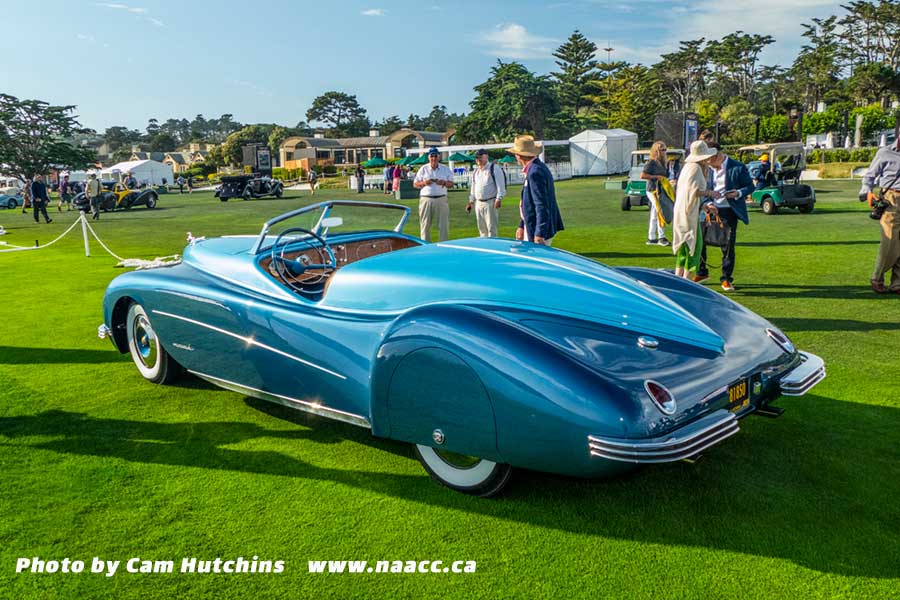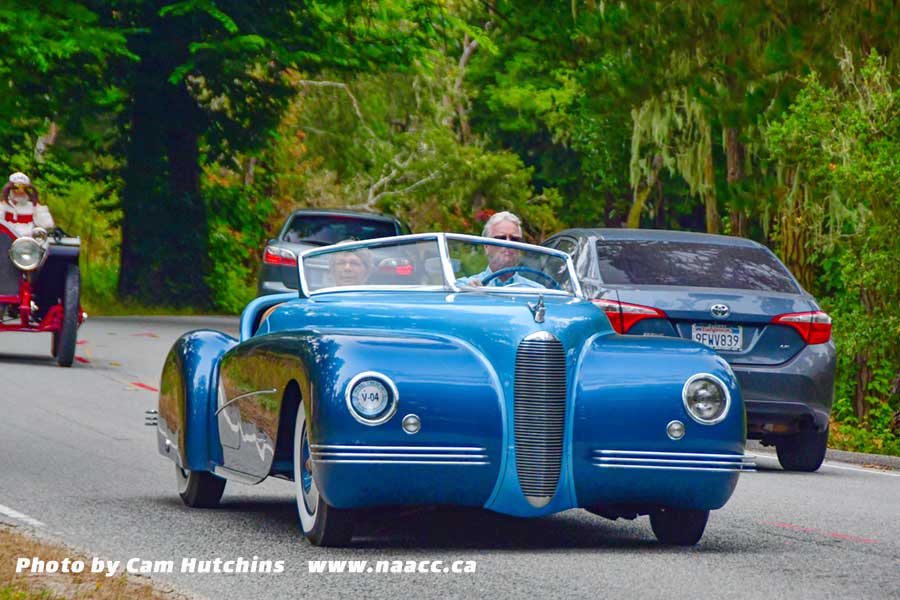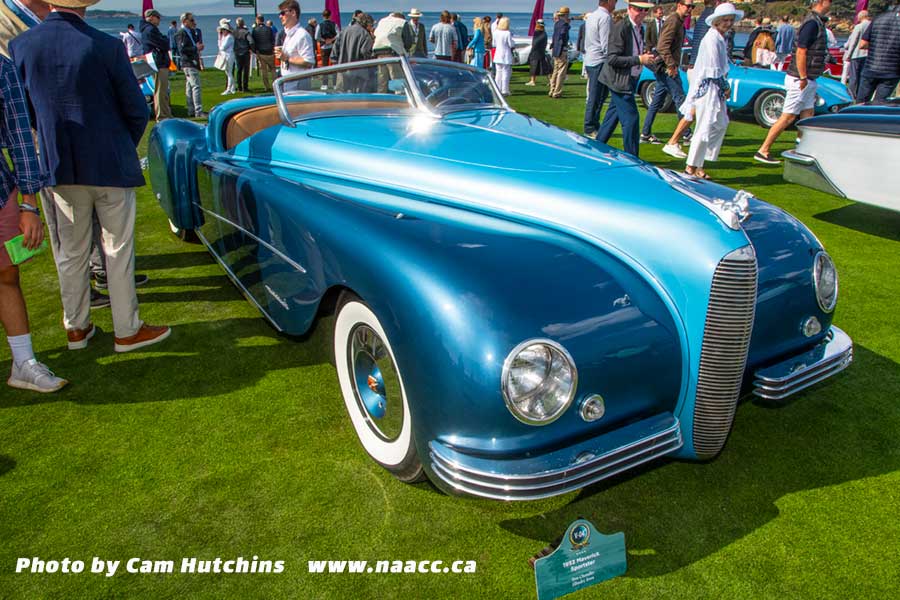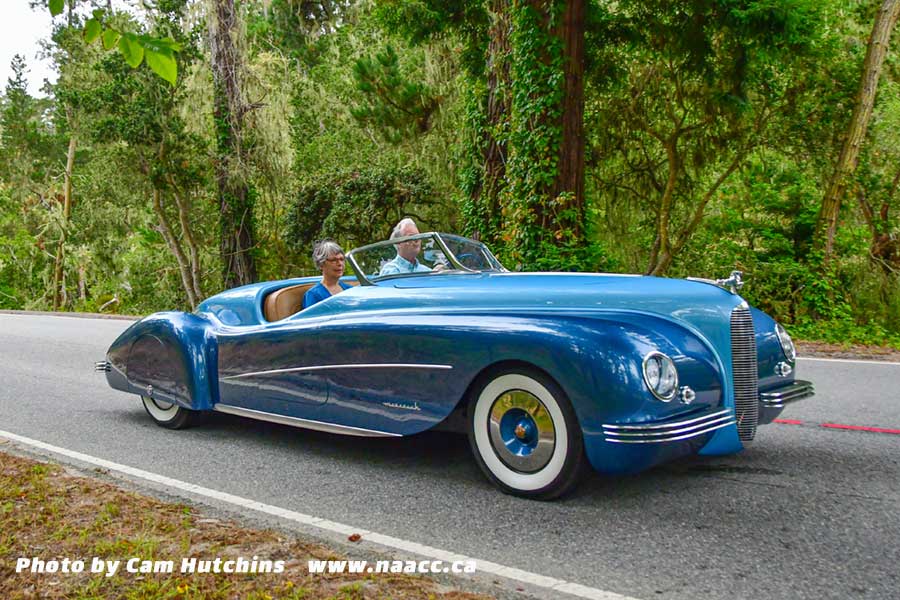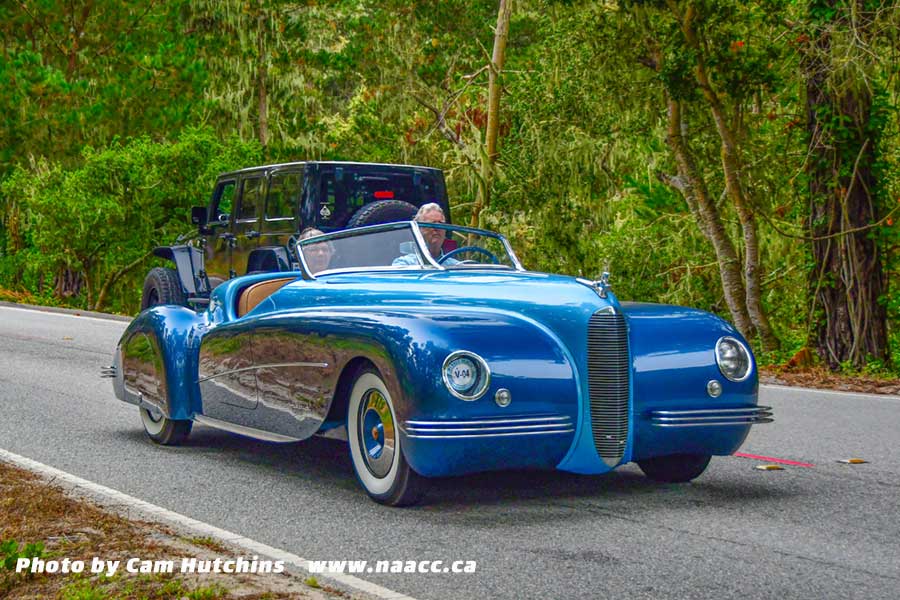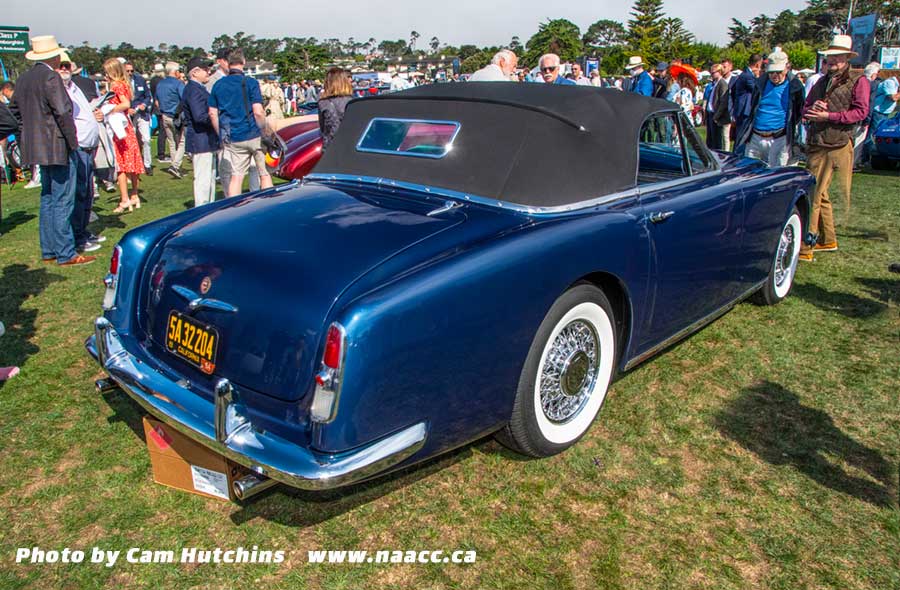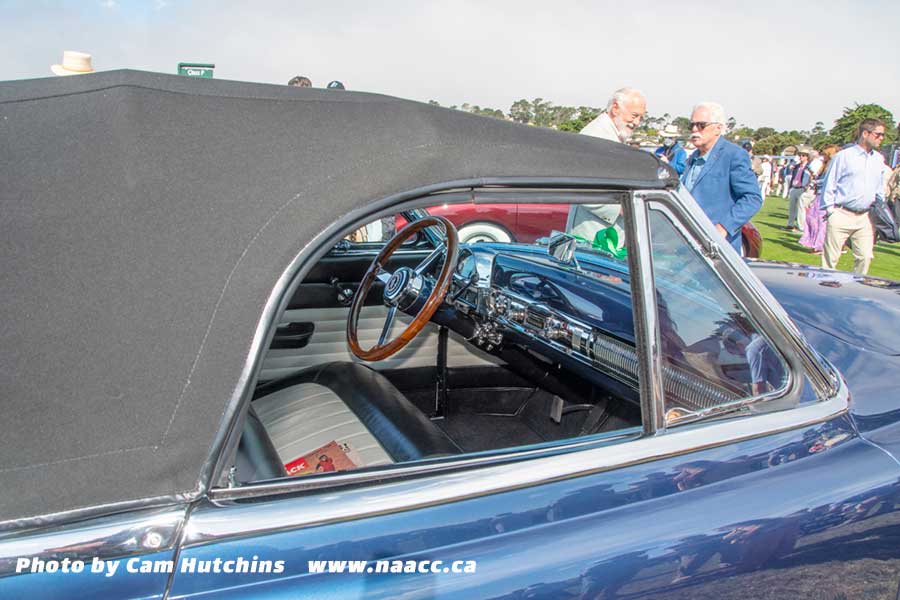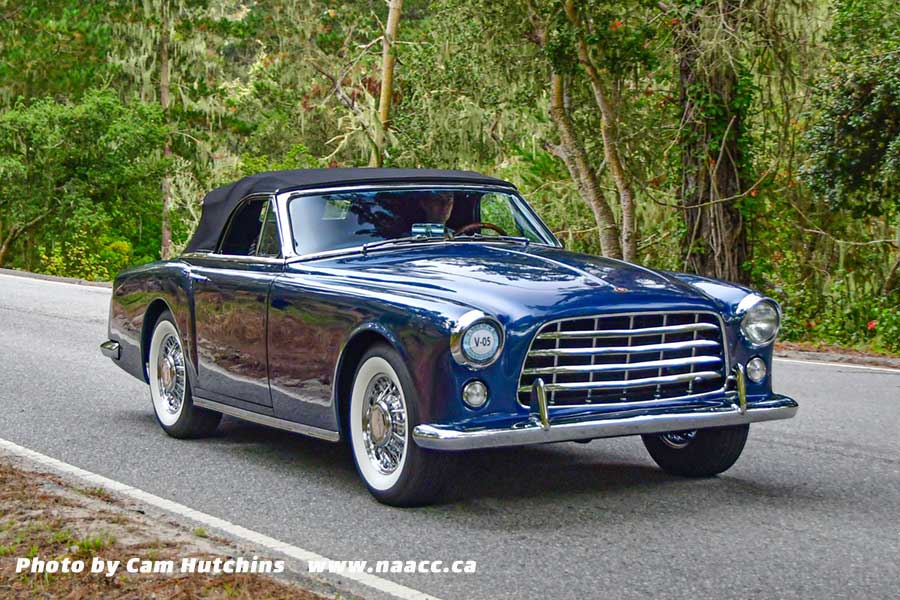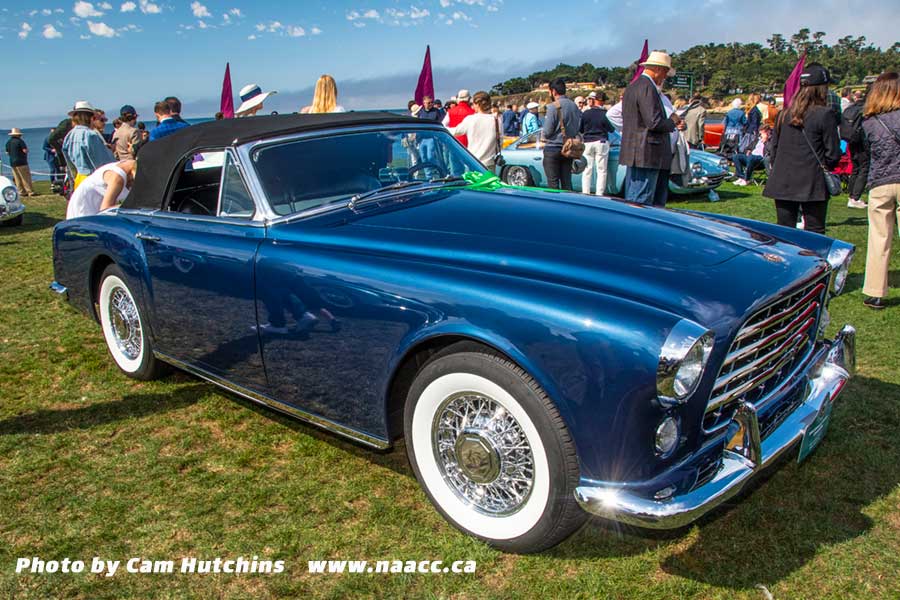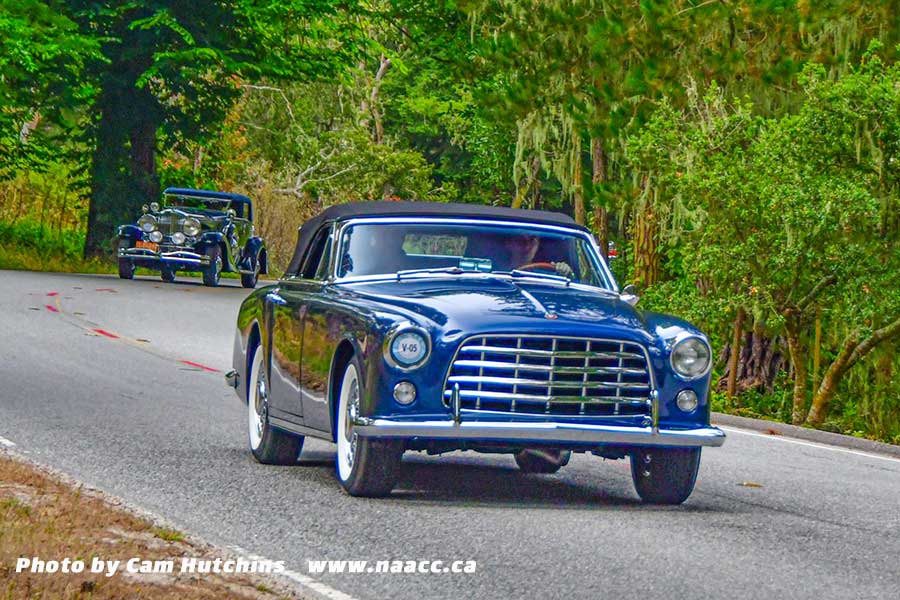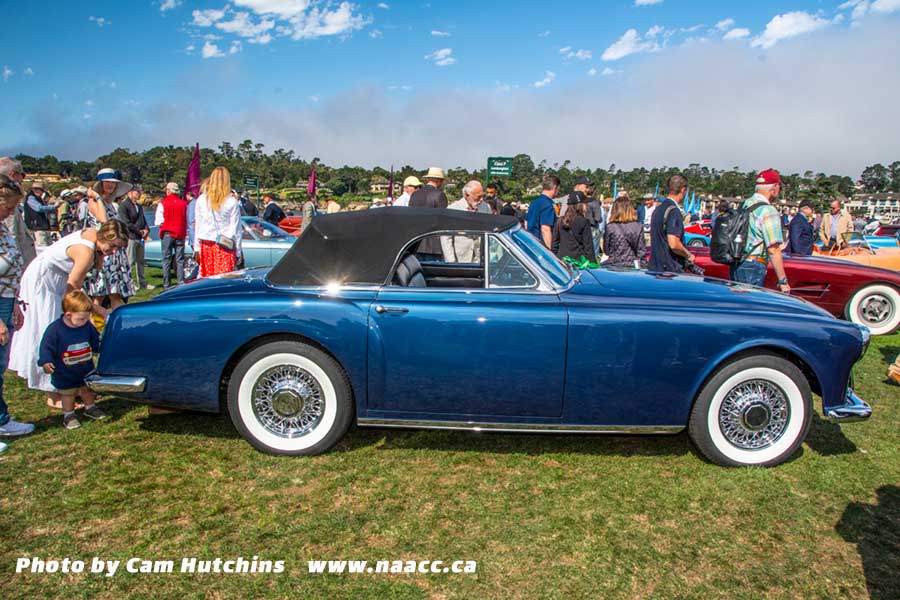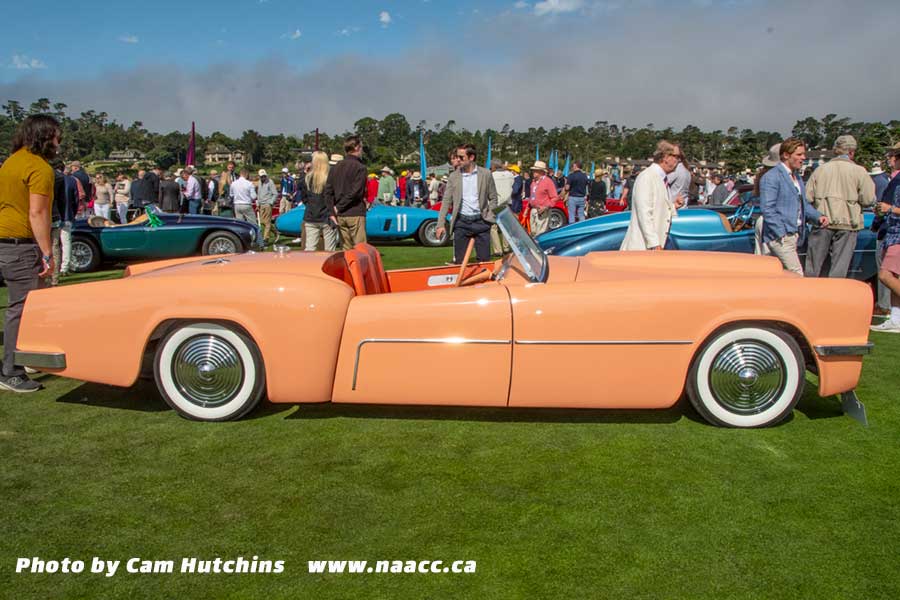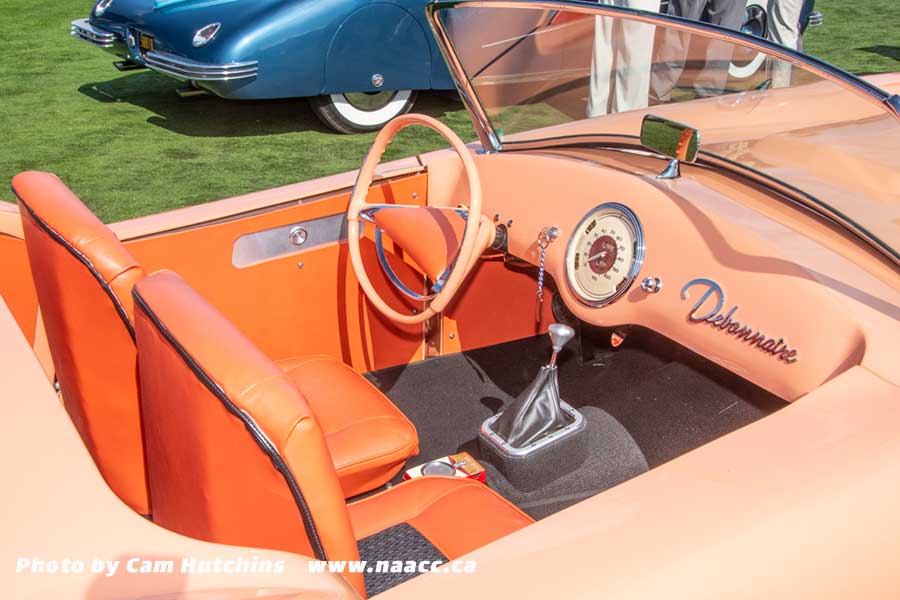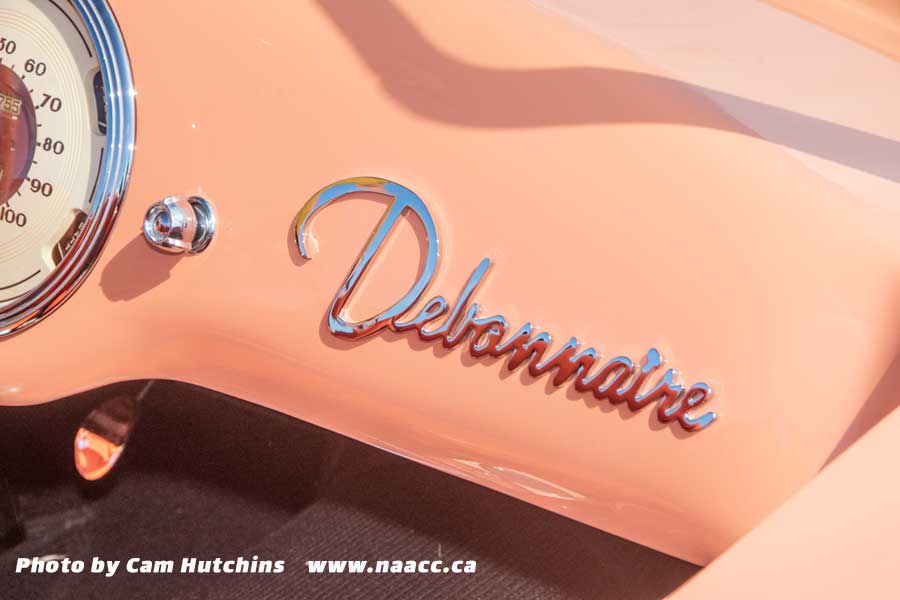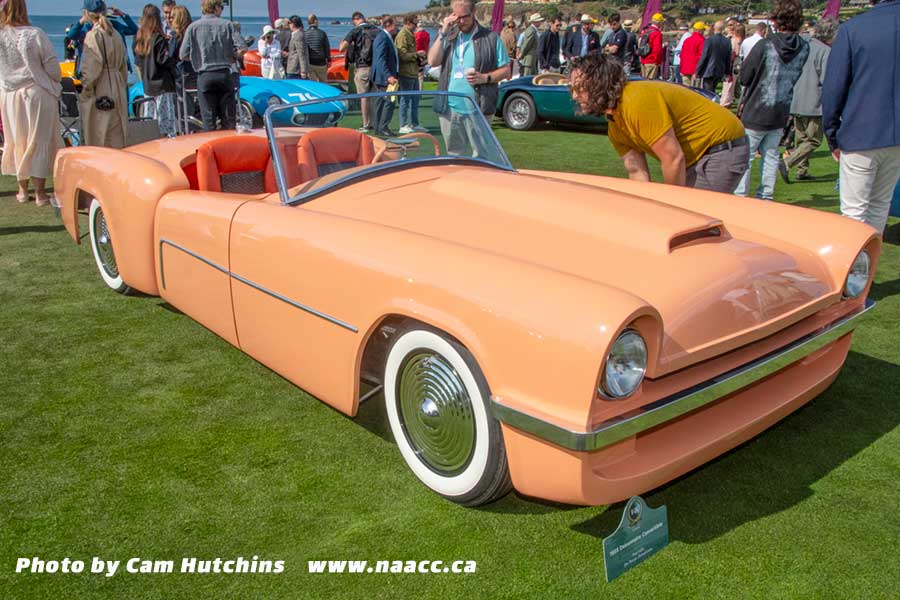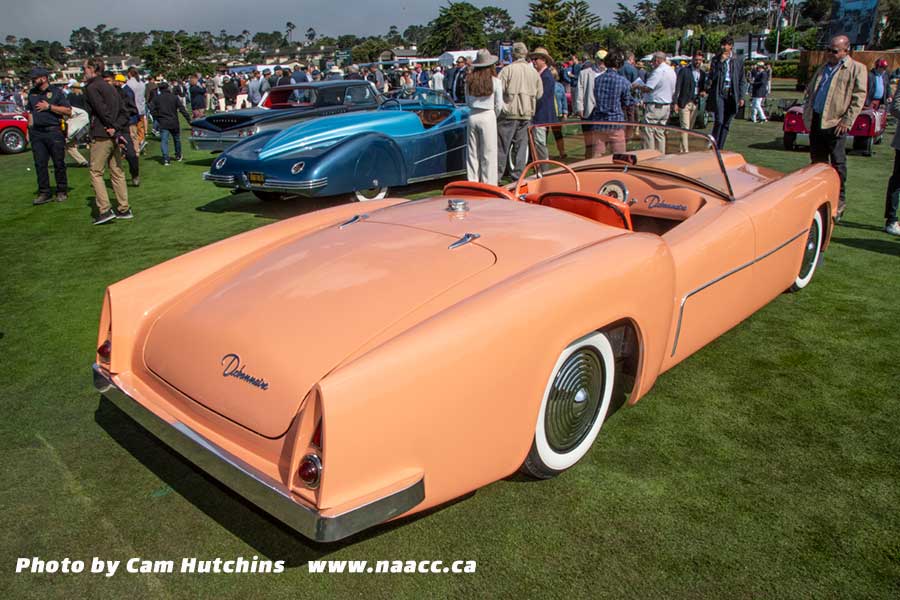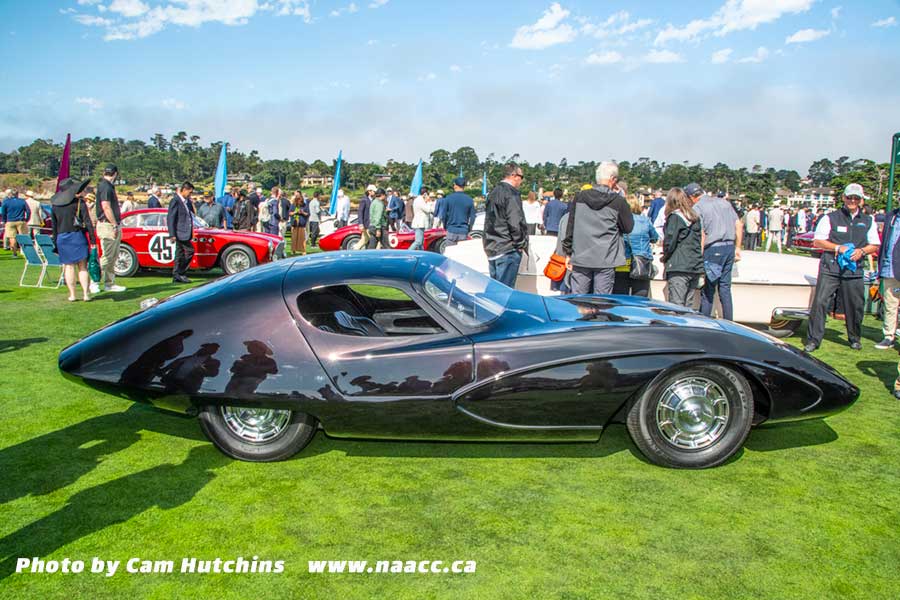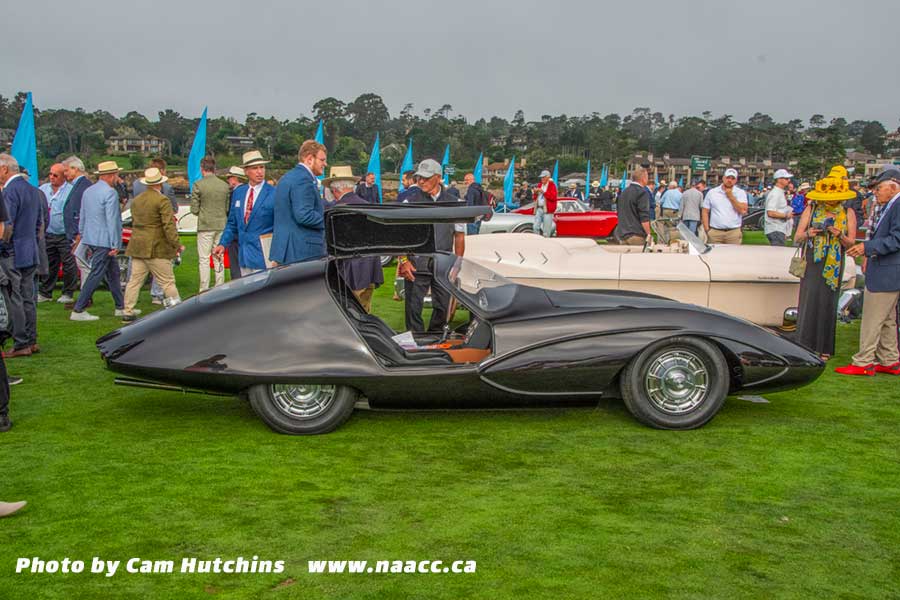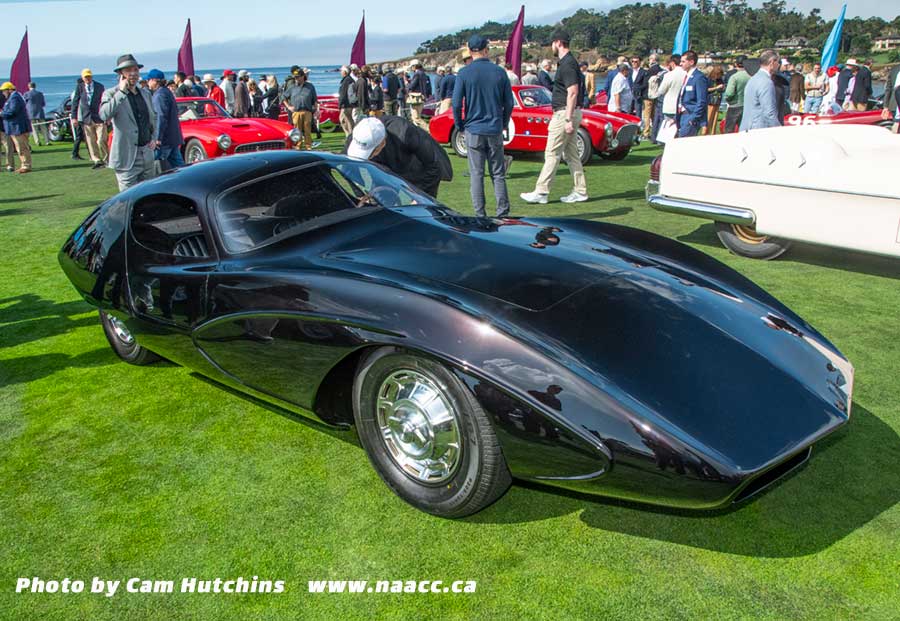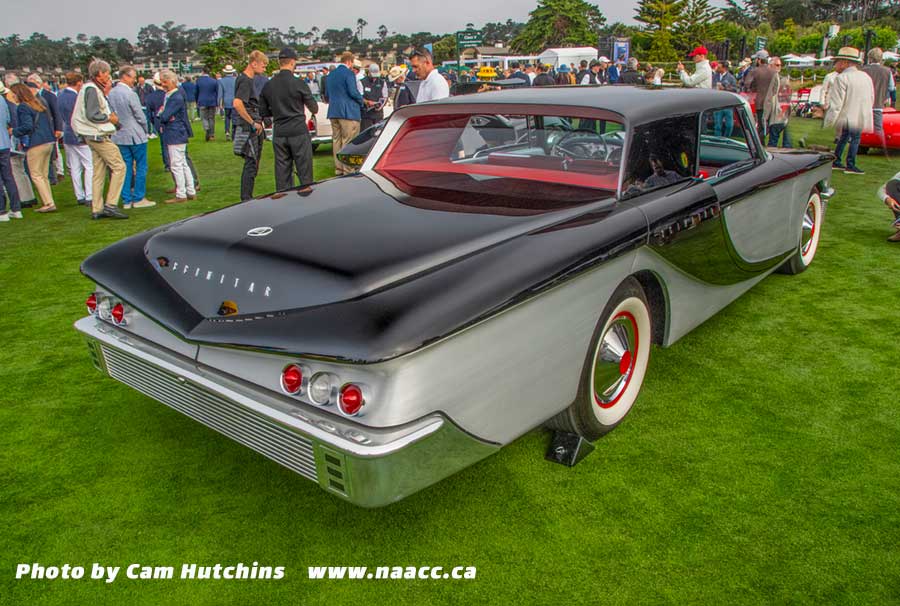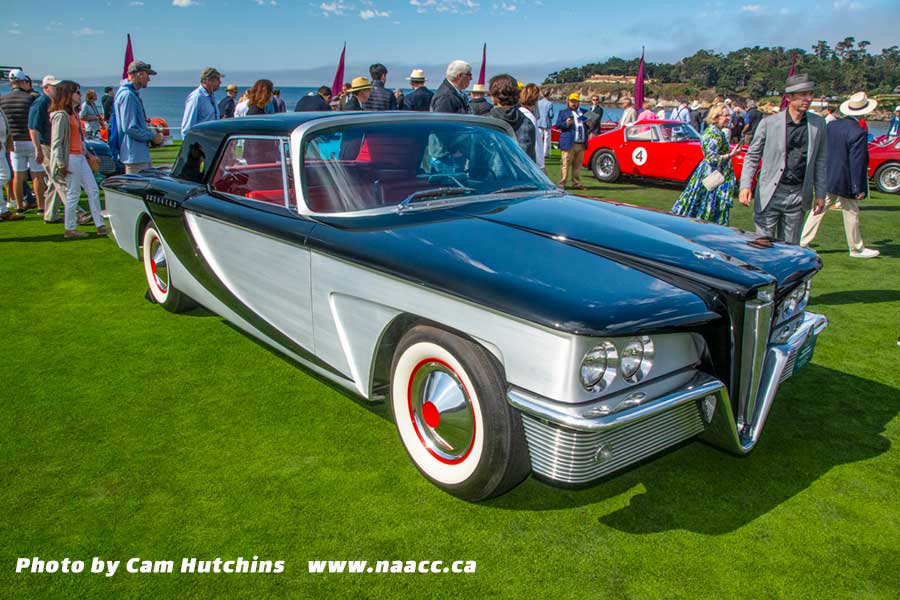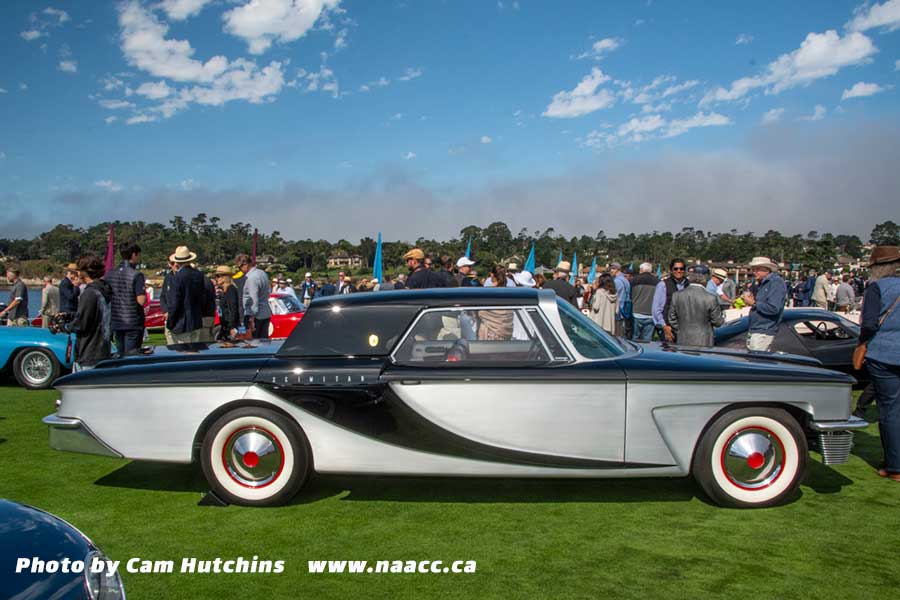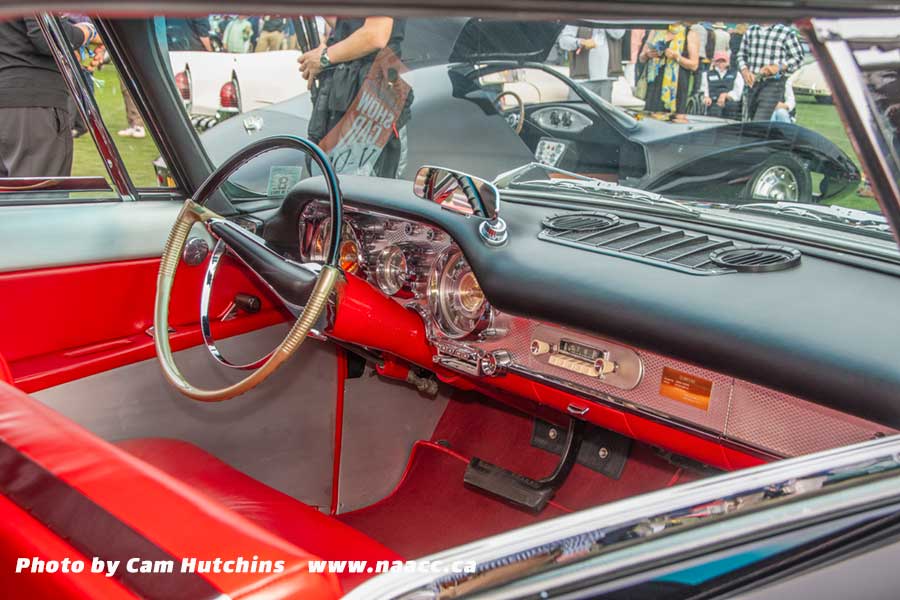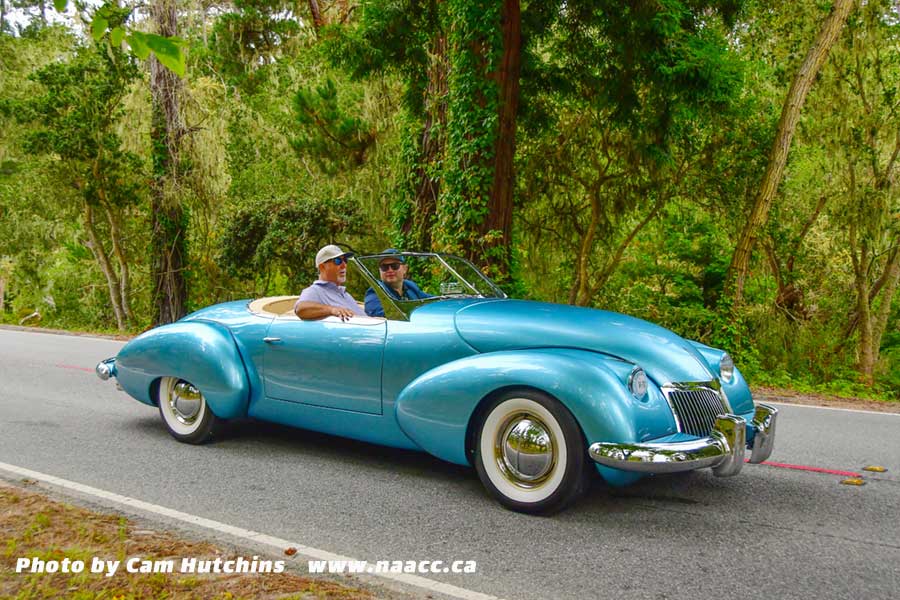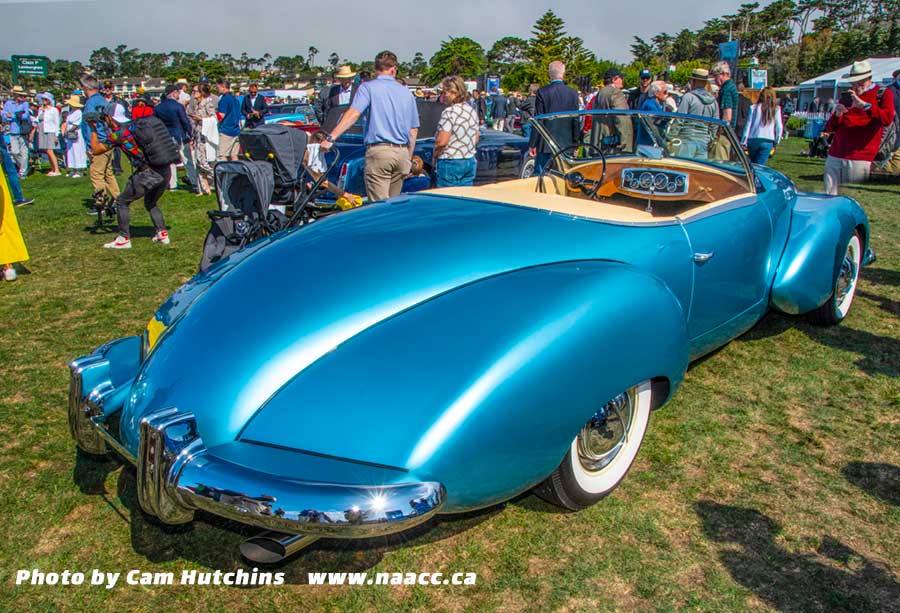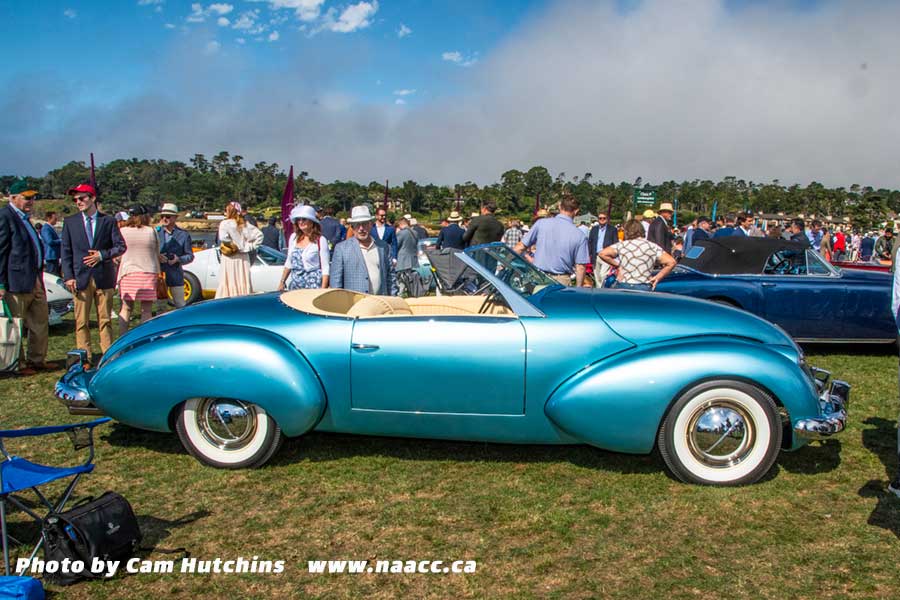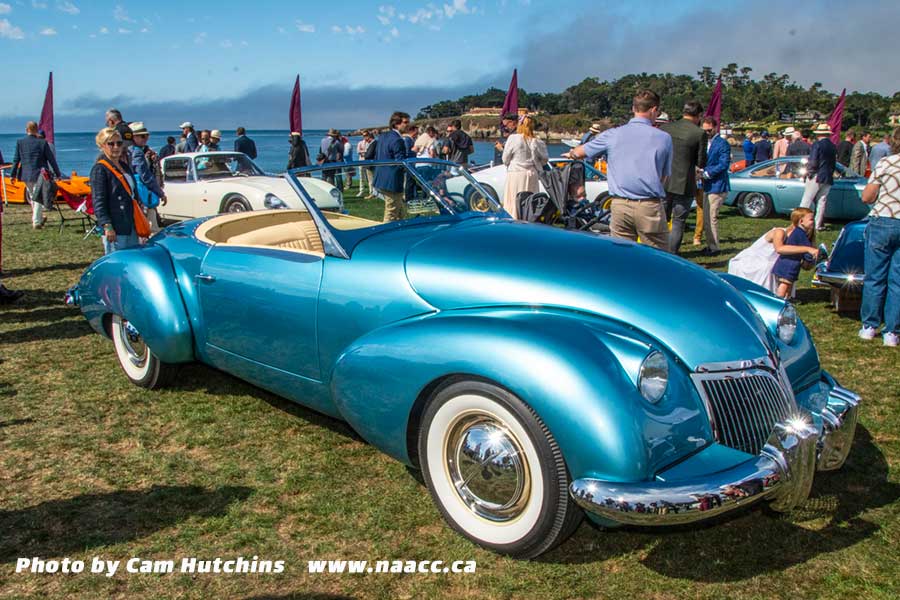The good folk at Pebble Beach pass out a little pocket sized guide of the cars shown at Pebble Beach and it is an invaluable guide for fellow Carnuts to learn about the entries.
Almost all the text on this post is courtesy of the good people at the Pebble Beach Concours d Elegance.
The American Dream cars are a really special class and these were cars dreamed up by passionate car enthusiasts without the financial support of the big car makers. These cars were often shown in magazines and probably had some influence on may car designers as they grew up and started designing Corvettes, Mustangs and Barracudas,
By Cam Hutchins
Click here to read the car guide>>
AMERICAN DREAM CARS
V-01
1951 Manta Ray Roadster Don Lacer, Junction City, Kansas
Arguably inspired by the General Motors LeSabre Motorama car, the rakish 1951 Manta Ray Roadster still turns heads. And it remains largely original; its fiberglass body has not been restored. Built by Glen Hire and Vernon Antoine of North American Aviation, who wanted to incorporate the sleek lines of a fighter jet into a production car, it was a Motor Trend cover car in July 1953. Powered by a Studebaker V8, this car is just one of one. The images from the magazine are from the July 1953 Motor Trend issue.
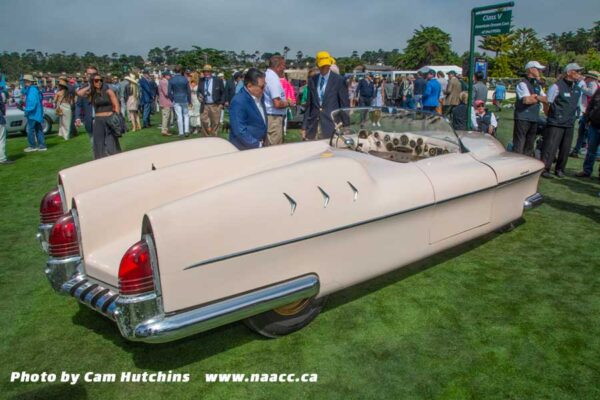

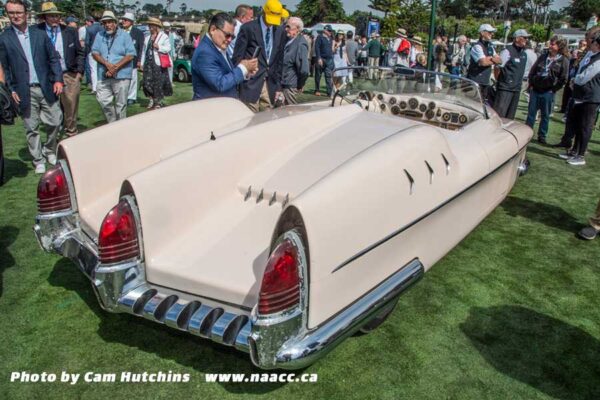
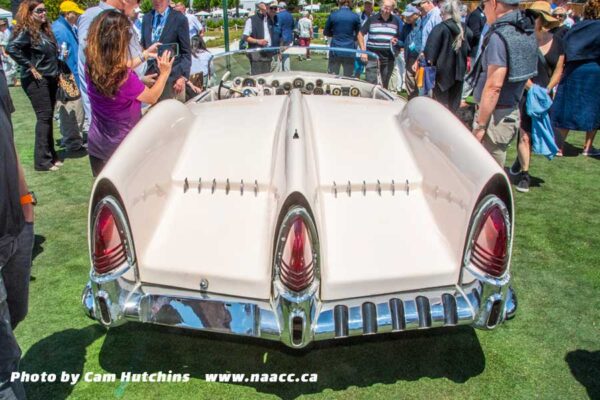
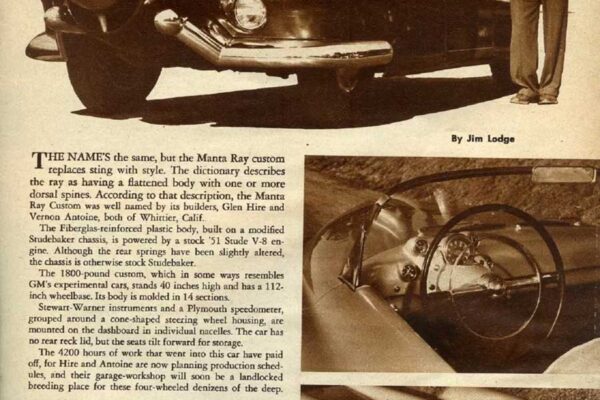
V-02
1952 Fageol Pataray Roadster Mark & Newie Brinker, Houston, Texas
The one-off 1952 Pataray roadster was built by Ray Fageol. A Mechanix Illustrated cover car, it was adapted from the radical Fageol Supersonic coupe and had a modified 300 hp Fageol bus engine at its core. The result was a powerful two-seater with a bold two-tone colour scheme. Its name combines those of Ray Fageo1 and his wife, Pat. Ray was the son of Lou Fageol, whose offshore boat racing escapades were legendary, as were his experiments with twin-engine cars. Prior to its appearance here, freshly restored, the Pataray had not been seen in decades.
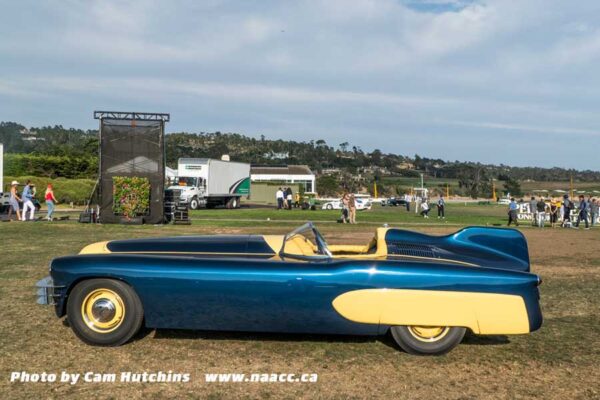
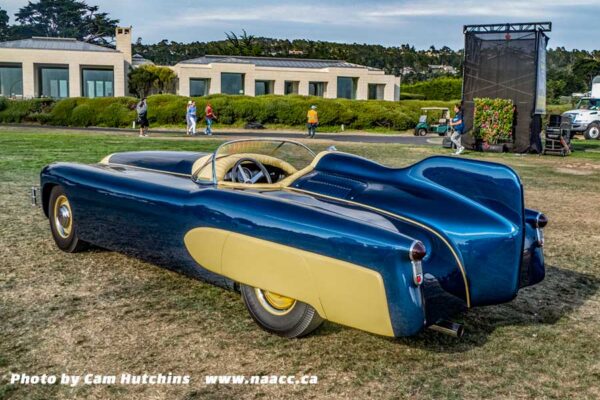
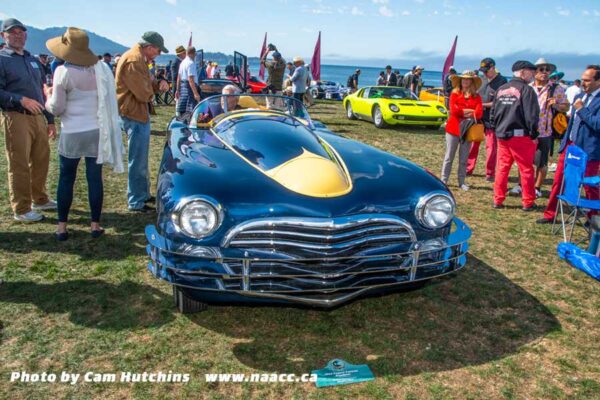
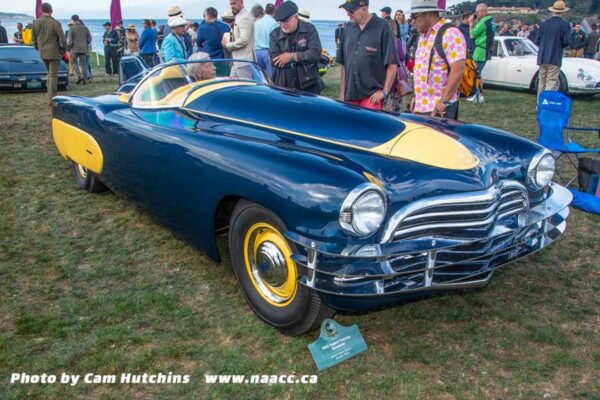
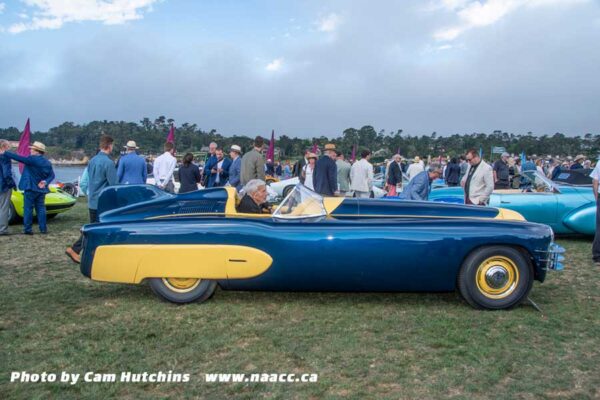
V-03
1953 Kurtis Sorrell S R-100 Roadster Mark & Newie Brinker, Houston, Texas
Featuring a sleek aluminum roadster body by California Metal Shaping and Bob Sorrell, the 1953 Kurtis Sorrell SR-100 prototype debuted at the Petersen Motorama of the same year. Built on an Indy 500 Kurtis racing chassis, it is powered by a 302-ci GMC I-6, with a Howard 12-port head and six carburetors. To an extent, this roadster resembles a streamlined Bonneville racer with a windscreen. This is the only example with an alloy body. As a concession to cost, a few others were made with fiberglass shells. Its appearance here will be its first public appearance in 70 years.
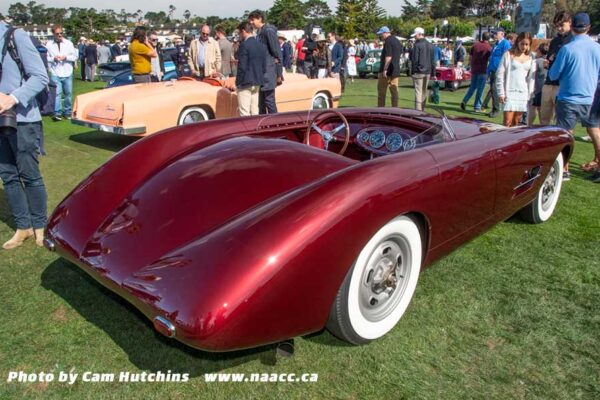
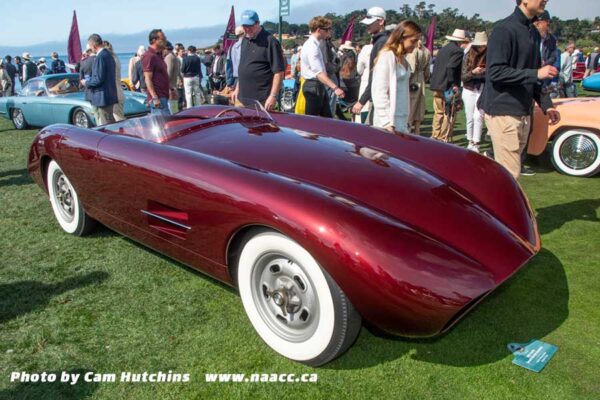
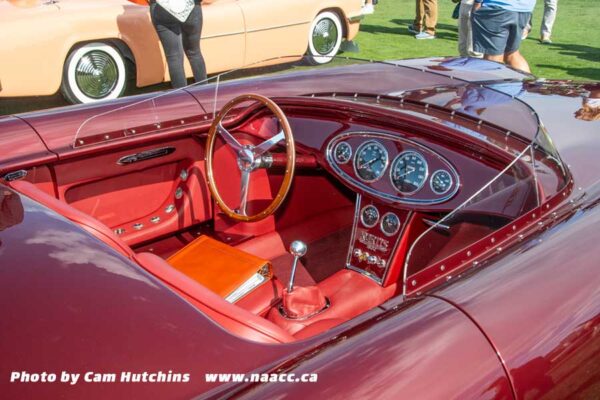
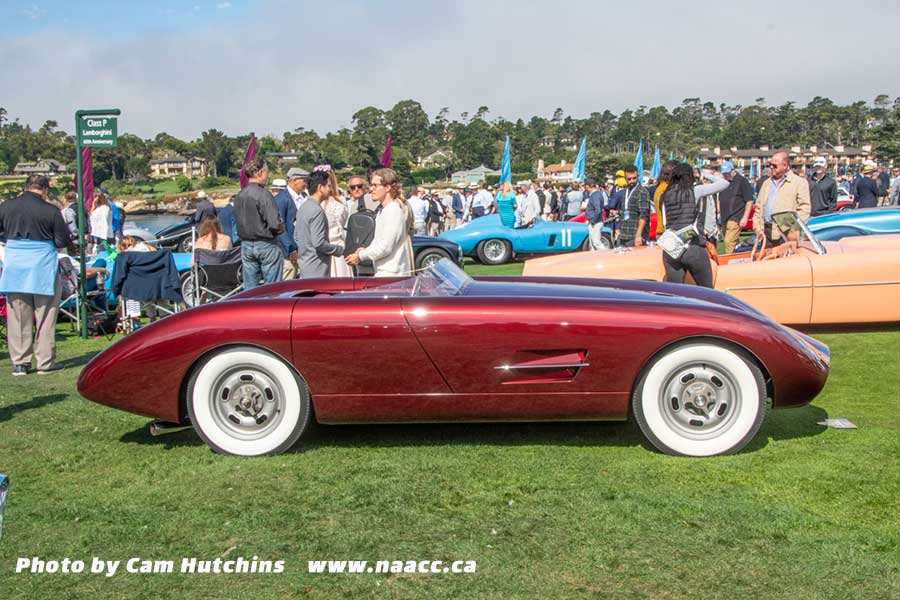
V-04
1953 Maverick Sportster Tom Chandler, Elkader, Iowa
Wilh its Jaguar-esque fadeaway fenders, a dramatic boattail, and Cadillac V-8 power, the 1953 Maverick was a big, bold two-seater. Designer and entrepreneur H. Sterling “Smoke” Gladwin called his car the “Land-based Pegasus.”
It stretched over sixteen feet in length, with an impressively long hood and deck, a tiny cockpit, and a rakish split windshield. Buyers had their choice of one, two, or no doors at all. Some seven Mavericks were made.
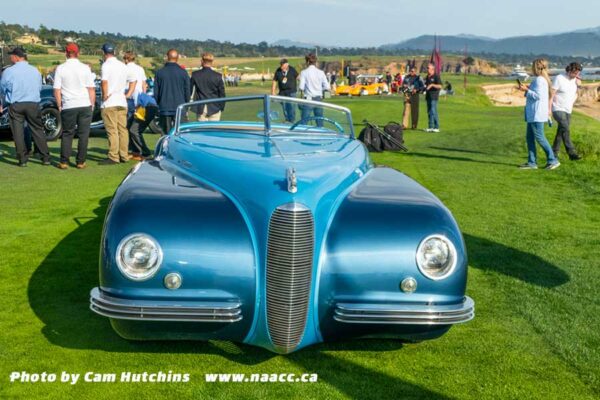
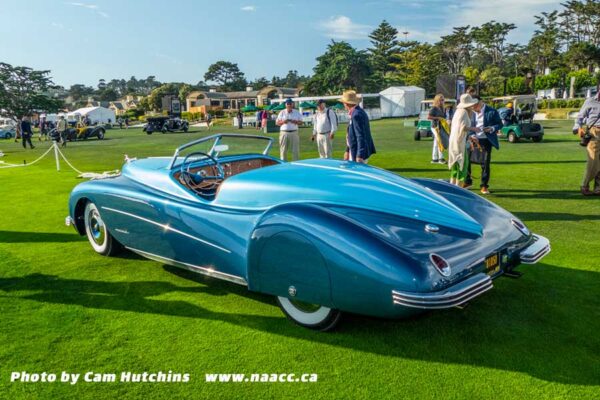
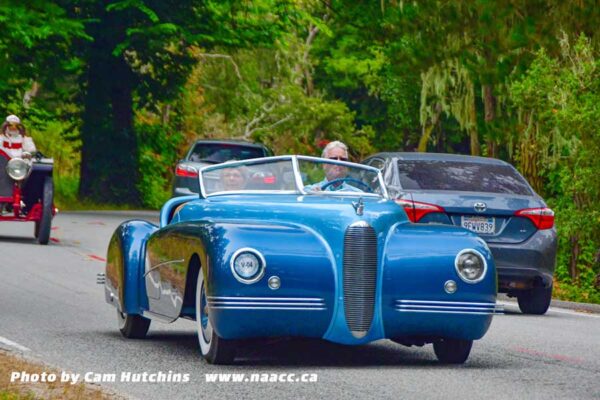
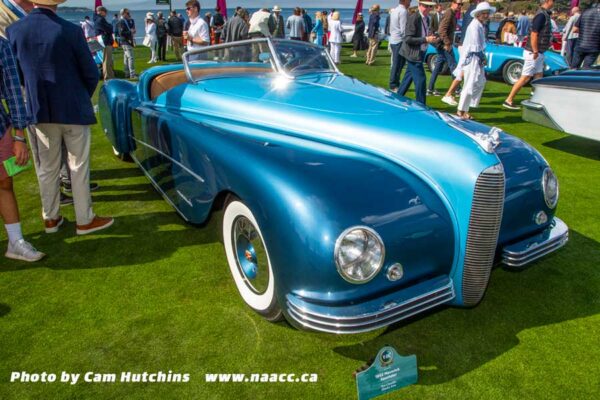
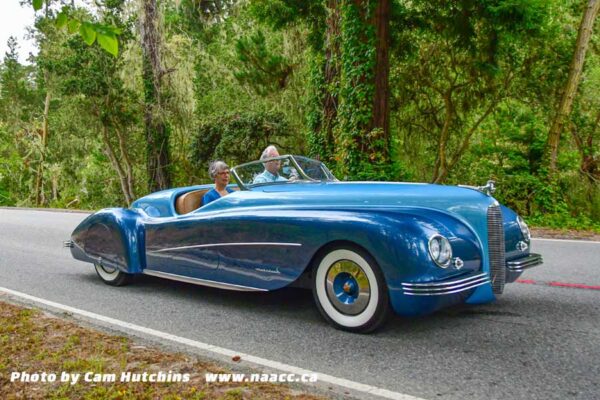
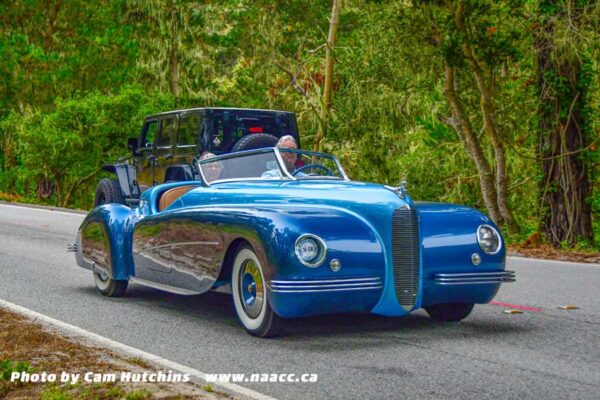
V-05
1954 Edwards America Convertible Gary & Cathy Edwards, Spring Branch, Texas
The 1954 Edwards America Convertible was designed by race car engineer Norman Timbs and built by Sterling Edwards and Phil Remington. Just a few years prior, Edwards was instrumental in founding the Pebble Beach Road Race and Concours d’Elegance. This convertible has a Henry J chassis, an Oldsmobile Rocket V8 engine, and a fiberglass body. One of just five Edwards cars, this is the first production model. (The current owners are unrelated to Sterling Edwards.)
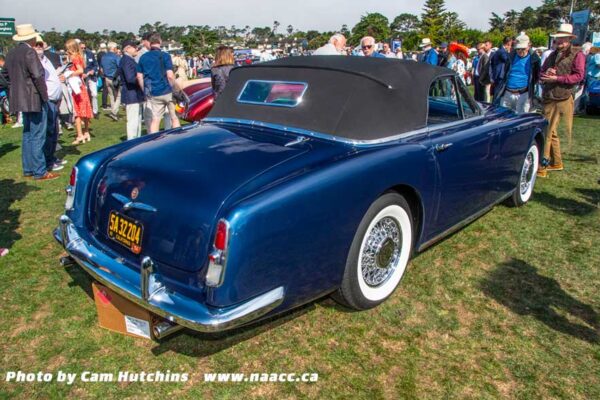
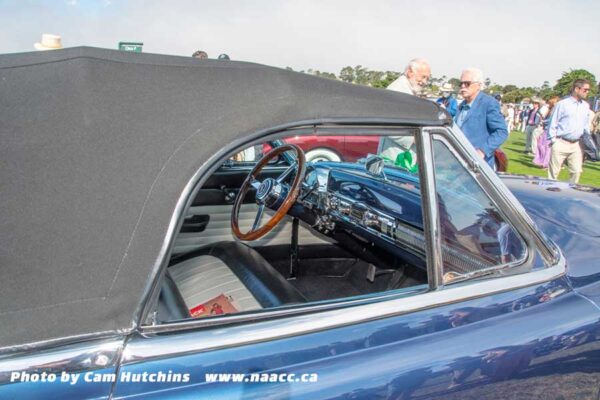
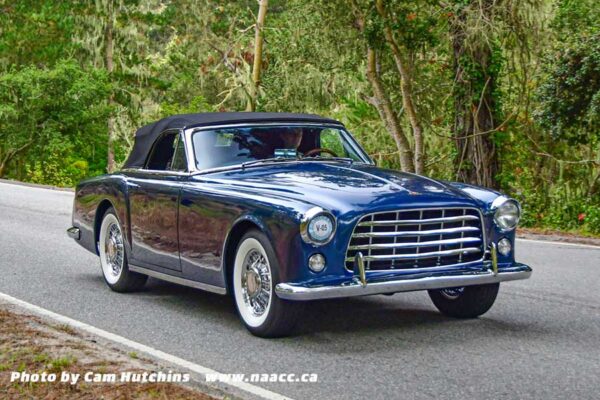
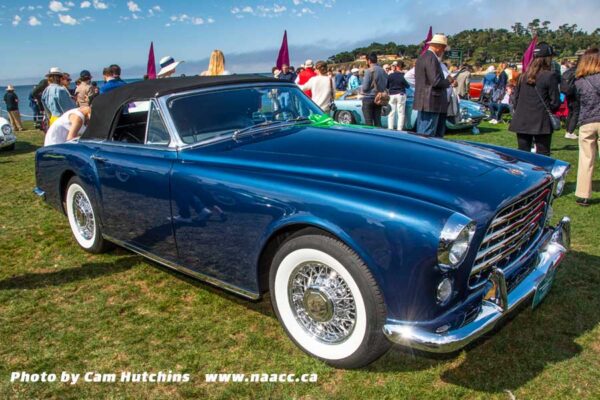
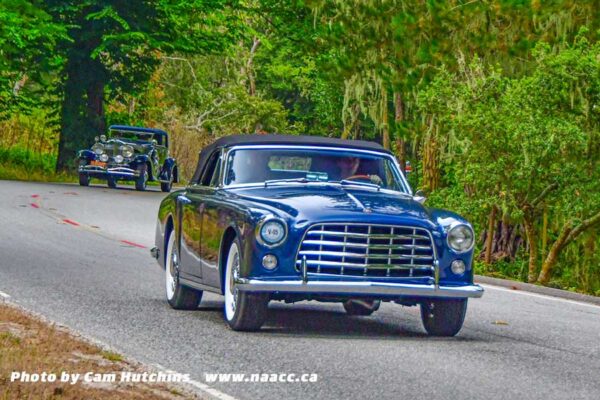
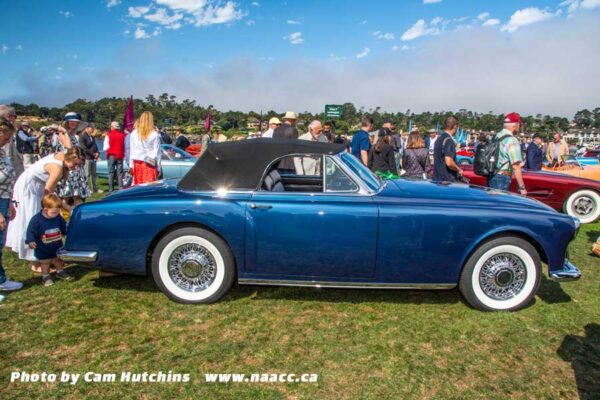
V-06
1966 Debonnaire Convertible Paul Sable, Jim Thorpe, Pennsylvania
Designed by Phillip Egan, who was on an early Tucker design team with Alex Tremulis, this snazzy 1955 Debonnaire Convertible was built on a 1950 Ford chassis (a few examples used a 1941-48 Ford), powered by a Lincoln Continental V8, with independent front suspension.
It is believed that just six were created and all had a dramatically styled fiberglass body. They were built by Val deOlloqui, the owner and President of Replac, a major fiberglass company. “The car was also called the Venture.
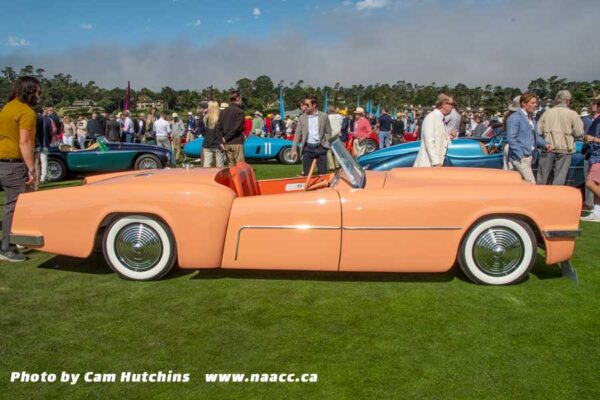
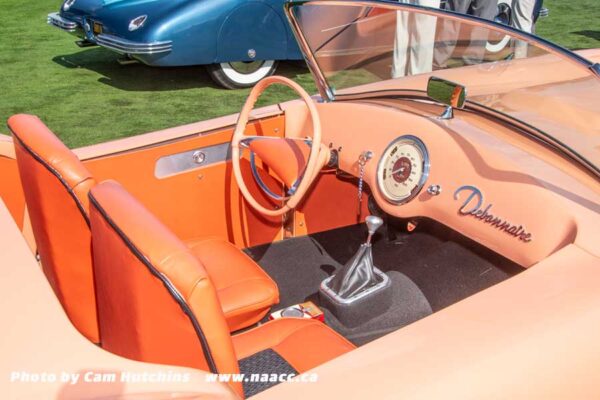
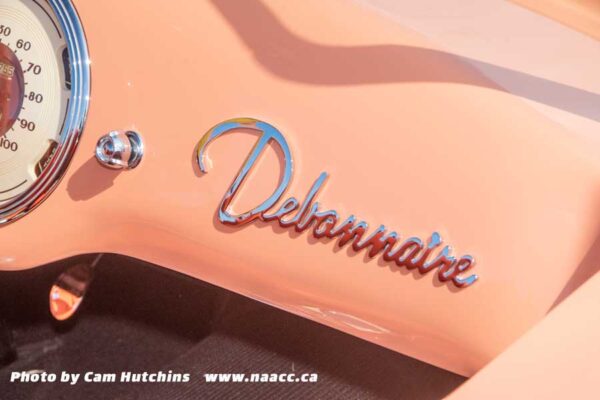
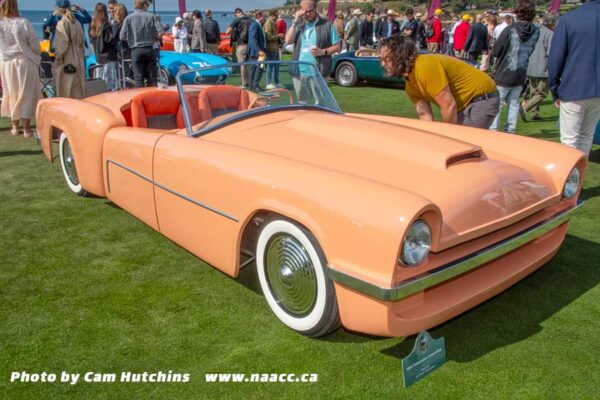
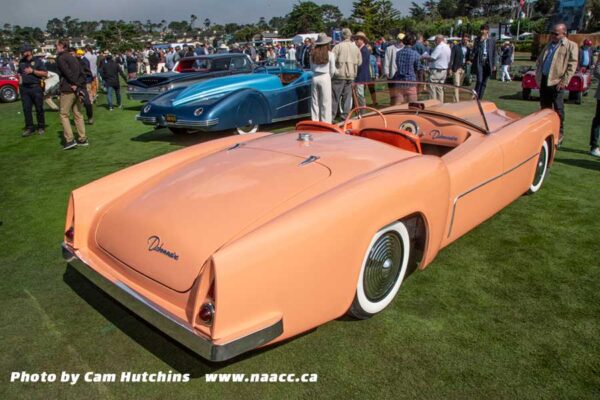
V-08
1958 MacMinn Le Mans Coupe Dennis & Karen Kazmerowski and John “Chip” & Shannon Fudge, Califon, New Jersey.
Famed designer, beloved ArtCenter College of Design instructor, and longtime Pebble Beach Concours Chief Honorary judge Strother MacMinn penned the sleek 1958 Le Mans Coupe, and his friend John Bond, the engineer/editor of Rood & Track, was the engineer. Mac wanted to create a car that could compete at Le Mans and still be streetable. The Corvette V8-powered car starred on the cover of Road & Trcack in August 1960 and was featured in Mac’s book, . Sports Cars of the Future. Writing in Sports Car Guide magazine, Robert Cumherford called it “the most exciting sports Car design constructed in the USA in years” -and people still mistake it for new today. Just five were built.
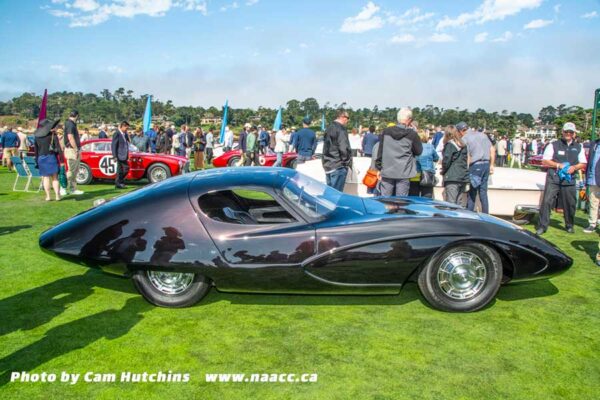
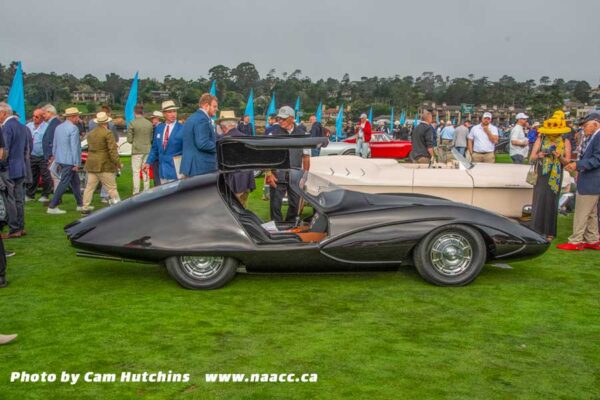
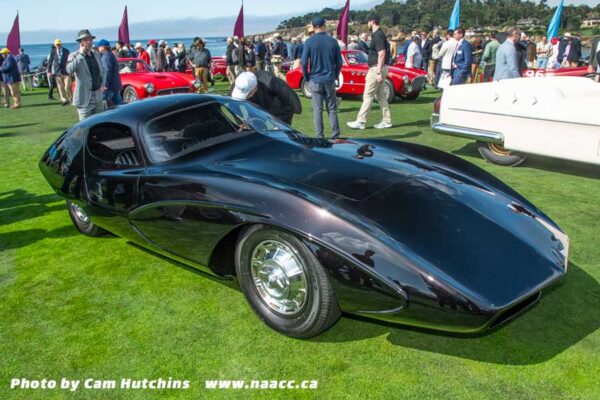
V-09
1959 Scimitar Convertible Coupe* Petersen Automotive Museum,
Los Angeles, California
Famed industrial designer Brooks Stevens penned the edgy 1959 Scimitar Hardtop Coupe, and Reutter Coachworks of Stuttgart, Germany built its all-aluminum body on a Chrysler New Yorker chassis. Olin Aluminum commissioned the car to showcase the advantages of alloy bodies, and it was launched at the 1959 Geneva International Auto Show. This is one of just three examples, and its folding metal hardtop can be retracted into the trunk.
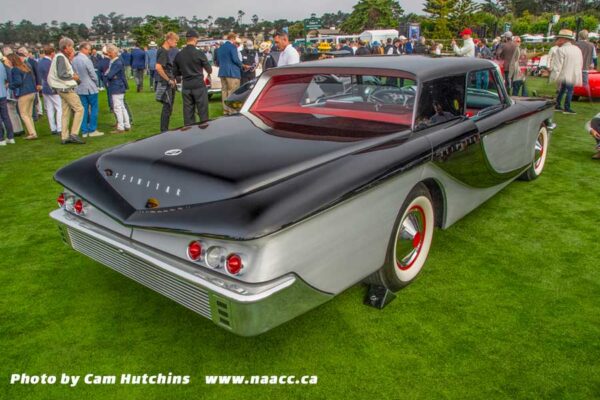
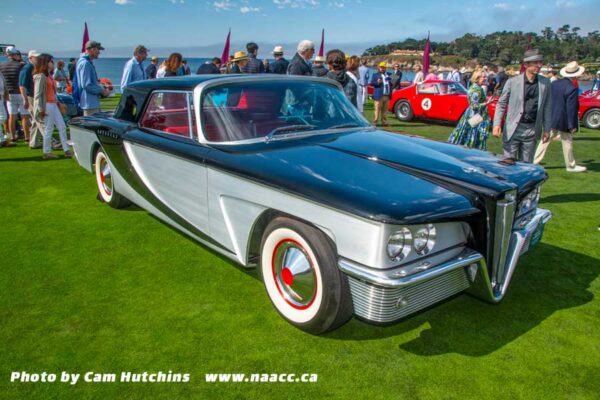
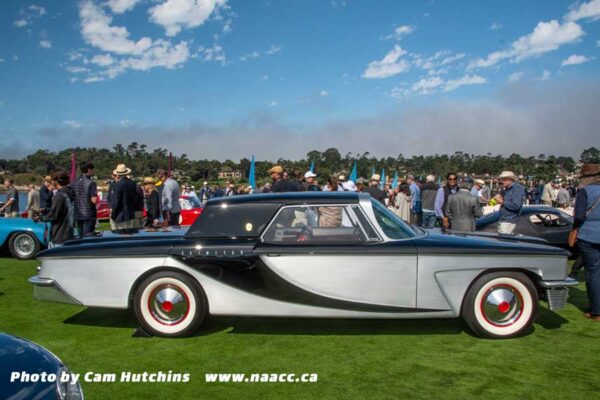
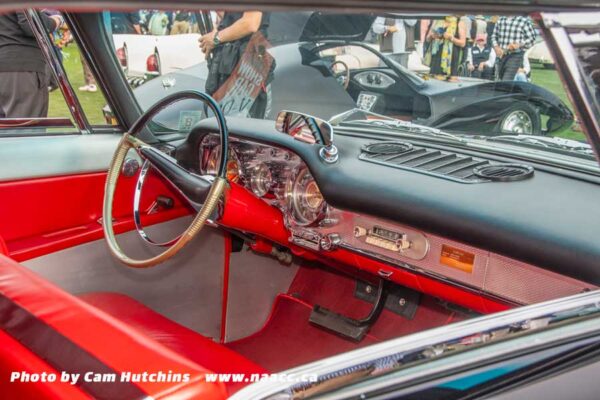
V-10
1948 Kurtis-Omohundro Comet Wayne & Amy Gould, Tucson, Arizona
Race car builder Frank Kurtis and Paul Omohundro collaborated on three projects. Comet Industries, Paul’s drop-forge hammer company, produced quarter-midget bodies for Kurtis as well the fiberglass fenders, hood, and trunk for Kurtis sports Cars. Their final collaboration involved two aluminum-bodied sports cars based on Kurtis’ design- the 1947 and 1948 Kurtis-Omohundro Comets.
Each car took Comet Industries one year to complete. This 1948 Comet was built on a Mercury chassis, with a Cadillac V-8 and an automatic transmission, a larger cockpit than its predecessor, a more stylish grille and windscreen, and a slightly longer wheelbase. Other changes included the hood shape, door size, and wheel openings. It had roll-up windows and a folding convertible top. The 1948 Comet debuted on a full-page spread in the February 1949 issue of Road & Track. It next appeared in the December 1949 issue of Popular Mechanics in an article titled “New Breed of Sports Cars.” Britain’s Autocar magazine also featured the car. Lost for over 50 years, both Kurtis-Omohundro Comets were found by the Undiscovered Clasics team and subsequently restored.
